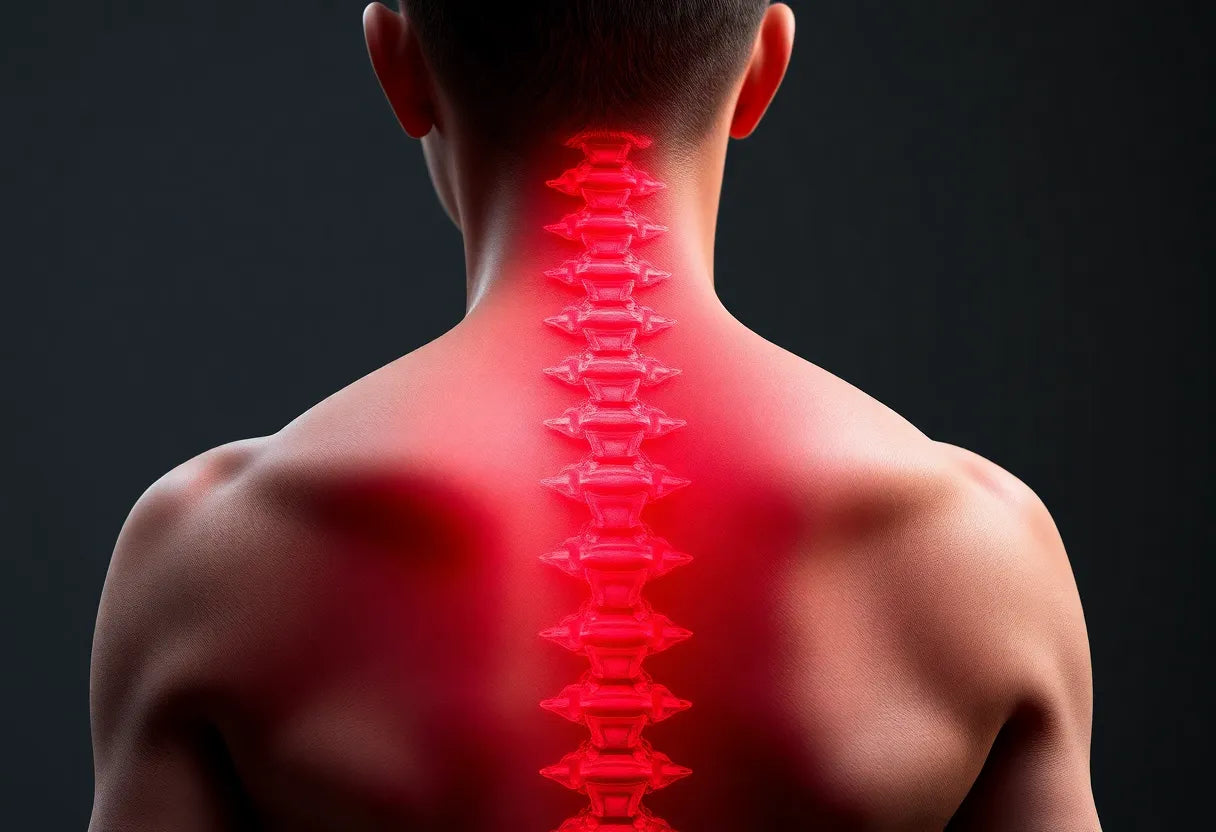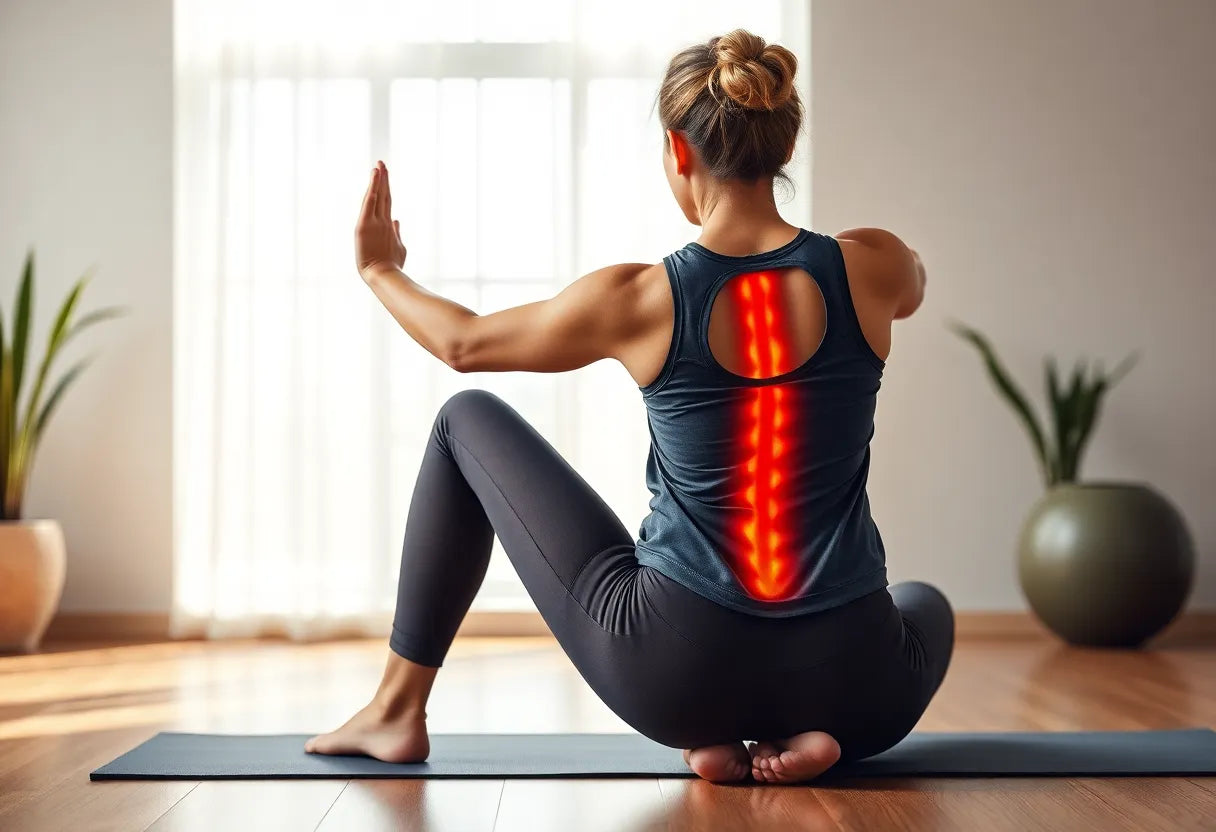Pain in the lower back is an incredibly common issue, affecting up to 80% of people at some point in their lives. This widespread prevalence makes it a significant concern for many, impacting not just physical health but also daily activities and overall quality of life. Understanding the causes, symptoms, and treatment options is crucial for effective management and relief, which is why it's important to explore this topic thoroughly.
Understanding the impact of lower back pain
Lower back pain can have a profound effect on a person’s daily routine. It can hinder simple tasks such as bending, lifting, or even sitting for extended periods. This discomfort often leads to decreased productivity at work and can severely affect one’s quality of life. The pain can range from a mild, persistent ache to sharp, debilitating pain that limits mobility and functionality.
Addressing lower back pain is not just about alleviating discomfort; it's about restoring one's ability to engage fully with life. By delving into the underlying causes and exploring a variety of treatment options, individuals can find pathways to relief and regain their independence. This blog aims to provide comprehensive insights into finding relief from lower back pain, empowering readers with the knowledge needed to take control of their health.
Embarking on the journey to relief
Imagine waking up each morning without the familiar, nagging pain in your lower back. Picture yourself moving through your day with ease, free from the limitations that pain imposes. This scenario may seem distant for those currently suffering, but it is achievable with the right approach and understanding. Are you ready to explore the solutions that can lead you to a pain-free life?
In the following sections, we will delve deeper into the causes of lower back pain, explore the risk factors and symptoms, and discuss when it might be necessary to seek professional help. We will also examine a range of treatment options, from conservative therapies to advanced interventions, and highlight the importance of a holistic, biopsychosocial approach to managing pain. By understanding these elements, you can embark on a journey toward relief and improved well-being.
Exploring the causes of pain in the lower back
When it comes to understanding pain in the lower back, identifying the underlying causes is a crucial first step. Mechanical causes are the most prevalent, accounting for up to 97% of cases. These include muscle strains often resulting from improper lifting techniques or sudden twisting motions. Such physical activities can overstretch or tear muscles and ligaments, leading to discomfort and inflammation.
Beyond mechanical issues, other factors can contribute to lower back pain. Conditions such as inflammation, arthritis, and herniated discs are common culprits. Nerve impingement, often referred to as sciatica, occurs when a herniated disc presses on the sciatic nerve, causing pain to radiate down the leg. Osteoporosis, characterized by weakened bones, can also lead to fractures in the vertebrae, resulting in significant pain. In rare cases, infections, tumors, and referred pain from internal organs can manifest as lower back pain. For women, gynecological issues like endometriosis and ovarian cysts may also play a role.
Identifying risk factors and symptoms
Several lifestyle factors increase the likelihood of developing pain in the lower back. Low physical activity, obesity, and smoking are significant contributors, as they can lead to weakened muscles and reduced blood flow to the spine. High physical stress at work, particularly jobs involving heavy lifting or prolonged sitting, can exacerbate the problem. Poor posture and repetitive movements also play a role in straining the back muscles and ligaments.
Understanding the symptoms of lower back pain is equally important. The condition can present as either acute or chronic pain. Acute pain is typically sudden and severe, often resulting from an injury, while chronic pain persists for more than three months and may not have a clear cause. Symptoms can range from a dull, persistent ache to sharp, shooting pain that may radiate down the legs, indicating possible nerve involvement.
Diagnosis and seeking professional help
Diagnosing the cause of lower back pain often begins with a thorough medical history and physical examination. Most cases do not require imaging tests like X-rays or MRIs unless there are neurological deficits or suspicions of specific conditions such as fractures or tumors. However, if the pain is severe, persistent, or accompanied by symptoms like numbness, weakness, or bowel and bladder dysfunction, seeking medical attention is crucial. These signs may indicate a more serious underlying issue that requires immediate intervention.
In the next section, we will explore the various treatment options available for managing pain in the lower back, from conservative methods to more advanced interventions. Understanding these options can empower individuals to make informed decisions about their health and well-being.
Treatment options for pain in the lower back
Finding effective treatment for pain in the lower back involves exploring a range of options, from conservative therapies to advanced interventions. For many, the journey begins with conservative treatments, which often provide significant relief without the need for invasive procedures.

Lumbar support belt
Provides support and relief for lower back pain, ideal for sciatica and herniated discs.
Conservative treatments
Physical therapy is frequently recommended as a first-line treatment for lower back pain. It focuses on exercises that stretch and strengthen the core muscles, providing better support for the spine. Medications such as non-steroidal anti-inflammatory drugs (NSAIDs) and acetaminophen are also commonly used to manage acute pain episodes. These medications help reduce inflammation and alleviate discomfort, making daily activities more manageable.
Alternative and complementary therapies
Beyond traditional treatments, alternative therapies can play a critical role in managing chronic pain. Practices such as yoga and acupuncture have gained popularity for their ability to reduce pain and improve flexibility. Meditation and cognitive behavioral therapy (CBT) can also be valuable in addressing the psychological aspects of chronic pain, promoting a more holistic approach to pain management.
Lifestyle modifications
Incorporating lifestyle changes can significantly impact the prevention and management of lower back pain. Ergonomic adjustments in the workplace, such as using chairs with proper lumbar support and positioning computer screens at eye level, can reduce strain on the back. Additionally, maintaining a balanced diet, engaging in regular physical activity, and ensuring adequate sleep are essential components of a comprehensive pain management plan.

Men's Posture Shirt™ - Black
Patented shirt activates back muscles for improved posture and pain relief.
Advanced interventions
For individuals who do not respond to conservative treatments, advanced interventions may be considered. These can include injections, such as epidural steroid injections or nerve blocks, which target specific areas of pain. In more severe cases, surgical options may be explored, though surgery is typically reserved for patients with significant neurological symptoms or structural abnormalities that do not improve with other treatments.
The biopsychosocial approach to pain management
Addressing pain in the lower back requires more than just treating physical symptoms. The biopsychosocial model emphasizes the importance of considering psychological and social factors in pain management. This approach encourages a focus on overall wellness, including mental health and social support, to achieve long-term relief and improve quality of life. By understanding the interplay between these factors, individuals can develop a more comprehensive strategy for managing their pain.
Frequently asked questions
What are the most common causes of lower back pain?
Mechanical injuries, such as muscle strains from lifting or twisting, are the most common causes. Other causes include conditions like arthritis, herniated discs, and nerve impingement.
How can I prevent lower back pain?
Preventing lower back pain involves engaging in regular physical activity, maintaining a healthy weight, practicing good posture, and using ergonomic aids to support proper alignment.
When should I see a doctor for lower back pain?
You should seek medical attention if the pain is severe, persistent, or accompanied by neurological symptoms such as numbness, weakness, or changes in bowel or bladder function.
Are there non-invasive treatments for chronic lower back pain?
Yes, non-invasive treatments include physical therapy, complementary therapies like yoga and acupuncture, and lifestyle modifications that focus on ergonomic adjustments and overall wellness.
Can ergonomic aids help with lower back pain?
Ergonomic aids can be beneficial by supporting proper posture and reducing strain on the back, contributing to both pain relief and prevention.
Källor
- Chou, R. (2018). "Low Back Pain." National Center for Biotechnology Information.
- "Lower Back Pain In-Depth." Hospital for Special Surgery.
- "Lower Back Pain." Yale New Haven Health.
- "Lower Back Pain." Cleveland Clinic.
- "Back Pain Symptoms & Causes." Mayo Clinic.
- "Spine Signs & Symptoms." University of Maryland Medical System.
- "Low Back Pain." World Health Organization.
- "Lower Back Pain." UPMC.
- "5 Signs Your Back Pain Might Be an Emergency." UT Southwestern Medical Center.


















